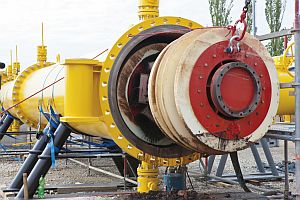Baltic States – CIS, Energy, EU – Baltic States, Gas, Transport
International Internet Magazine. Baltic States news & analytics
Friday, 09.01.2026, 18:15
Nord Stream presents results of the environmental monitoring in Germany
 Print version
Print version |
|---|
The report shows that the construction of Line 2 in German waters had no unanticipated impacts on the environment. In 2011, construction activities in Germany lasted from September through November, informed BC Nord Stream’s press service.
During construction in 2011 surveys were conducted on possible effects on resting seabirds and harbour porpoises in the Pomeranian Bight. As in 2010 there were no detectable disturbances on both groups of animals.
In the summer of 2011 extensive surveys were carried out to monitor the success of the physical seabed reinstatement in the pipeline trench areas. For this, the seabed was surveyed along the entire route of the pipeline in the German sector and restored reef structures were monitored by remotely operated vehicles. Sediment samples were collected for physical and chemical laboratory analysis. The results of the measurements helped to verify the projections about the affected area that had been established in the environmental impact assessments. The results of the monitoring were positive: there was no release of significant amounts of sediment pollutants and the backfilled sediment had not been contaminated either. Also, the impact area had the projected size.
The complicated excavation logistics for the recovery of the top layer of the seabed were successful: Sand quality on the seabed surface largely meets the original condition and only one year after the end of construction the submarine relief has re-settled in many parts of the route. Glacial stones that were placed in the trench area during reef restoration provide a suitable location for algae, barnacles and mussels to grow on.
Furthermore, in 2011 Nord Stream began with the onshore and offshore monitoring of resettlement of the areas affected by construction in 2010. The monitoring was able to verify that plants and animals started to repopulate the restored areas as predicted. During the next years further surveys will be conducted to give an indication on the pace of this process. It is expected that these areas will be fully repopulated by 2014.
The monitoring programme in the German sector is the most extensive environmental monitoring carried out by Nord Stream in the five participating countries along the pipeline in the Baltic Sea. The reason is that the pipeline in the German sector passes through nature conservation areas and had to be entrenched for safety reasons in various parts of the shallow waters in the Bay of Greifswald and the Pomeranian Bight.








 «The Baltic Course» Is Sold and Stays in Business!
«The Baltic Course» Is Sold and Stays in Business!

